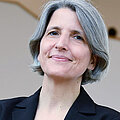Contrasts and Speed - Philanthropy in Asia
Over a thousand delegates flee from the sultry heat of Singapore's famous Marina Bay to the Asian Venture Philanthropy Association’s (AVPA) annual conference. The venue is located above one of the country's typical shopping malls with the usual global brands and refrigerator temperature inside. Two worlds in one location. For participants, too, giving and investing, non-profit and for-profit, old or new morph into each other. Differences matter less when you are moving at light speed. This is also the story of the Asian Venture Philanthropy Association AVPN, launched seven years ago and now the most important philanthropy platform in a region from China to Indonesia, from India to Japan.
I have known the 74-year-old founder Doug Miller from his success as co-founder of the European Venture Philanthropy Association. The American Vietnam veteran steps down as AVPN chair in Singapore but only to launch an African Venture Philanthropy Alliance. In his experience with philanthropy on four continents, Asia stands out for both speed and diversity. As confirmed by a recent global study, foundations grows at a much faster rate here than in USA or Europe. And philanthropy comes in a staggering multitude of legal forms and tools covering the entire spectrum from donations to social investments.
In plenary I debate with Mercedes Lopez-Vargas, among others, who runs a whole group of family businesses and foundations in the Philippines and describes that they sometimes use this, sometimes that form of organisation to fulfil their mission. Former peace activist Shuichi Ohno is currently causing a small revolution in conservative Japan. Ohno-San has convinced his colleagues on the board of the Sasakawa Peace Foundation to use 100m USD of their 1.1bn USD endowment for impact investing, not least because the foundation is struggling to hit even two per cent return on its endowment (which has been focused on government bonds that used to be the bread and butter of foundation investing in Germany as well). With microfinance funds and impact investing funds such as Blue Orchard, he cleverly replicates the revenue patterns of the rest of the endowment in order to show that the effect does not have to cost ongoing income. Only the surpluses go into higher risk direct social investments.
In contrast to European conferences, the Ford Foundation is represented here with a good part of its senior management. Roy Swan, the new head of Impact Investing, outlines the result of the search for opportunities for its pledge to invest a billion dollars in mission-aligned investments: In the US, the foundation invests in social housing, in the Global South it will use venture capital to invest in Fintech companies connecting people with financial services. At the conference, the foundation is looking for partners to invest with, because to understand the enormously different markets, it needs local expertise.
In fact, Asian philanthropy works in a wide variety of legal frameworks - many of which have little to do with open societies. The Chinese Narada Foundation has created a whole infrastructure for social innovation and private donations in China in alignment with the government. And in Singapore, quasi-state donors and investors such as the Tote Board, which uses the money from horse racing for the few social purposes left over from the total state regulation of public life, are flourishing. Not everything here is a model for Europe.
At the centre of the conference, however, despite all the debate about philanthropic approaches, is a small group of delegates who have no money to spare: Social entrepreneurs such as Nguyen Thao, a Vietnamese woman with vitreous bone disease who has created over 30 jobs for people with disabilities in her video editing company within two years and is looking for investors here. Like most delegates, she is flexible when it comes to whether she seeks grants or equity investments.
Money is not the scarce commodity here. It is the people with the great ideas and the courage to implement them beyond the boundaries of geography, sectors and thought structures.
There is a lot we can learn from that.

EZ-Scout Dr. Annette Kleinbrod
All articles of EZ-Scout Dr. Annette KleinbrodRelated Content
The reform of foundation law is coming
The bill to standardize foundation law will enter into force on 1 July 2023. The legislator has addressed important demands made by the Association of German Foundations and by academia, paving the way for improvements for small and large foundations alike.
Reflecting on 25 years of progress for gender equality – and how far there is to go
Twenty-five years ago, the World Conference on Women in Beijing adopted a Platform for Action that transformed national and international policies almost all over the world, recognizing that women’s rights are human rights. It impacted not millions, but billions of people.
“The SDGs are a powerful common language”
Benjamin Bellegy, Executive Director at the Worldwide Initiatives for Grantmaker Support (WINGS), on his new plans for the global SDG Philanthropy Platform (SDGPP).

